

Please read the instructions carefully before submitting the paper.
Download the instructions here.
Please submit your full paper ONLY in the prescribed format given.
Download the full paper template here.
Please download and fill the Self Decleration form.
Download the self-declaration form here.

Dr. Joy Sen is a Professor and the current Head of the Department of Architecture and Regional Planning, Indian Institute of Technology, Kharagpur, West Bengal, India. He is the former Head of Ranbir and Chitra Gupta School of Infrastructure and Design, IIT Kharagpur, and also the Principal Investigator of The Science and Heritage Initiative (SandHI), an initiative sponsored by Ministry of Human Resource Development, Government of India. His main areas of research are Community and Regional Planning Analyses & Programming as well as Architecture and Planning related Heritage Studies and Documentation. An avid educator and academician, he has an extensive and impressive working experience as well as collaborations with the various Environmental Design programs under DFID Government of the United Kingdom, international universities and various research institutes. He has numerous frontline publications with top journals and has authored seven books on Indian Heritage, Iconographic documentation, and sustainable planning. He is also an artist and a musician.
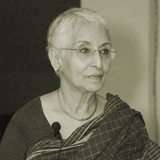
Uzramma, as the director of Malkha Marketing Trust, has been committed to reviving the centuries-old, naturally dyed, handwoven handloom Malkha cotton fabric, to its former glory. Malkha Marketing Trust aims not only to reinstate the use of authentic khadi but also to encourage the tradition of handmade products. Uzramma has been associated with the cotton textile industry of India since 1989 and is also the founder of the non-profit research center, “Dastkar Andhra”. She has been a member of policy groups for the handloom industry constituted by the Planning Commission and the PMO. She has participated in multiple seminars on cotton growing, weaving, and marketing.
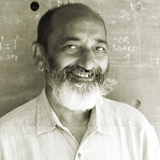
Kiran Vaghela, founder member and director of Hunnarshala Foundation for Building Technology and Innovation, is a civil engineer by education and a self-taught architect. Post the massive earthquake in Gujarat in 2001; he has been extensively working with the local craftspeople in the rural areas of Bhuj to rehabilitate the communities and capacitate the people with the knowledge on reconstructing their habitat. He has consistently contributed in terms of time and service to help make the lives of artisans easier. Through Hunnarshala, he has been instrumental in creating a platform for interaction between scientific, modern building science and traditional knowledge. The noble initiative has been successful in suggesting directions for strengthening the engagement of artisans to deliver high-quality buildings, infrastructure, and community space for long term sustainable developments.
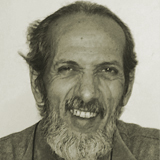
Narendra’s association with tribal communities and ecology began when he undertook his first field research from 1980-85 in the Abujhmad region of Bastar, Central India. Though the project formally concluded in 1985, he stayed in contiguous areas and has spent over thirty years with the primitive hunter-gatherer tribe inhabiting Abujhmad. He has always manifested a deep passion for his work in understanding the Adivasi sensibility towards the wilds, their respect for the environs they live in, and the natural-ecological cohesions in everyday living that sustain the Adivasi way of life. Through his book, “Bastar Dispatches: A Passage Through the Wild,” Narendra has endeavored to make a meaningful and measurable difference by bringing to light issues of Adivasi ecological- cultural expressions, notions of forests and wilds, nature-inspired modes and institutions of governance, through narratives of a people at peace with themselves and their ecosystem.

Prem Chandavarkar is the managing partner of CnT Architects: an award-winning and widely published architectural practice based in Bangalore, India. He is a former Executive Director of Srishti School of Art Design & Technology in Bangalore, and is an academic advisor and guest faculty at Indian and International Colleges of Architecture. In 2016, he was the Walton Critic at The School of Architecture and Planning at Catholic University of America in Washington DC. In the same year, he was appointed as a member of the board of The Architecture, Culture and Spirituality Forum, USA. He is a member of the current Executive Committee of Indian Institute of Architects Karnataka Chapter, and was the curator of the centenary year National Convention of the Indian Institute of Architects, on the theme “Imagining the Indian City”. Besides his design practice at CnT, he writes lectures and blogs on architecture, urbanism, art, cultural studies, philosophy, politics and education

Madan Meena is a practicing visual artist and a researcher working extensively with the rural, nomadic and tribal communities of Rajasthan. His personal association with the region and its people led him to choose as his doctoral thesis ‘Art of the Meena Tribe’. Focusing on the women of the Meena tribe he has documented and exhibited their art of wall painting across the country and abroad. His work on the subject is available in his two published books ‘Joy of Creativity’ and ‘Nurturing Walls’.
As a curator, he designed an exhibition on brooms for the ‘Arna Jharna: The Desert Museum of Rajasthan’, Jodhpur. He was also Associate Director for the film ‘Jharu Katha (Broom Stories)’. His interest in folklore studies led him to work on the diverse repertoire of the Tejaji Ballad sung across central and south-eastern Rajasthan. For this he was initially supported by a grant from the University of Cambridge under the World Oral Literature Project and published a book ‘Tejaji Gatha’ and its audio DVD. Later to extend his documentation on the ballad he received a Senior Research Fellowship from the Ministry of Culture, Govt. of India. Madan is also a recipient of a Sahapedia–UNESCO Fellowship to study folklore among the Jogi community of eastern Rajasthan.
Madan’s curiosity about languages led him to start work on the secret language of the de-notified tribes. For this he received a fellowship from the Firebird Foundation for Anthropological Research, USA. For the People’s Linguistic Survey of India project he co-edited his state volume ‘The Languages of Rajasthan’. He was also a state coordinator for ICSSR’s project on the educational status of the nomadic and de-notified tribes of Rajasthan and wrote the report.
Madan continually studies languishing craft traditions practised by a very few aged artisans. As a visiting faculty he teaches traditional crafts at the Indian Institute of Crafts and Design-Jaipur, NIFT-Jodhpur and NID-Krukshetra. He is a Trustee of Bhasha Research and Publication Centre-Vadodara and Executive Member of Kota Heritage Society. One of his important responsiblity is with the Adivasi Academy in Gujarat where he is a Honorary Director.
Contact:
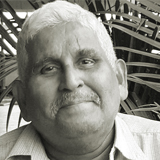
Professor Pradip Prabhu is the former Dean of Tata Institue of Social Sciences, Tuljapur. He is the founding member of the barefoot academy of governance.
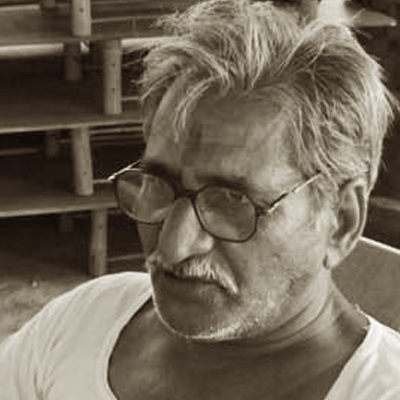
Sri Ravindra Sharma fondly called as "Guruji" is the founder of Kala Ashram. Born and brought up at Adilabad, his wanderings around helped him to get an in-depth knowledge of the culture, heritage and economy of that area.
Kala Ashram is a melting pot of culture, heritage, india’s rural social-economics, art, science and anything that is associated with India and the way of life that was naturally led by people here. The Kala Ashram has been founded on the four principles or four pillars of life on this land of SanatanDhrama of Bharat that is Dharma, Artha, Kama and Moksha (Principles of Life, Economics, Aesthetics and Liberation). Here research is being continuously being done to understand and implement the way of life led by people in India vis-a-vis economics, philosophy, culture, heritage and science.
The Indian village was a self-reliant unit where every individual was living prosperously. The effort here is to understand how the people in the villages used to lead a life of self-reliance and honour. The secret according to Shri Ravindra Sharma lies in the 49 Hindu Samskaras (Sacraments). These unique processes, which were part of life, played a very key role in the way of life.
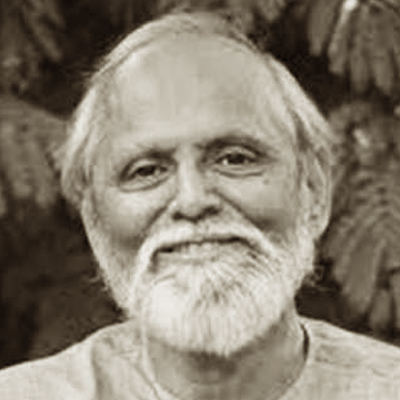
Nimish Patel studied at the MIT, Cambridge, USA, with specialization in Urban Settlement Design in Developing Countries, and also has a Diploma in Architecture from CEPT, Ahmedabad. He is a core team member of the Whole School Development Plan carried out by Ministry of Human Resource Development and a Member of the Panel of Sustainability, Bureau of Indian Standards for the upcoming National Building Code. He is a Member of the INTBAU India Committee of Honor (IICoH) and also the IICoH Representative on Board of INTBAU India, on the Editorial Board of StonEdge.
He has officiated as Member of the Jury for the UNESCO Asia-Pacific Heritage Conservation Awards 2001 to 2004 & 2007 to 2009 & 2012 at Bangkok. He has lectured widely, nationally and internationally and has been a visiting faculty at CEPT for Architecture, Urban Design & Planning, and has taught at the Masters of Built Environmental Programme at UTS, Sydney, Australia.
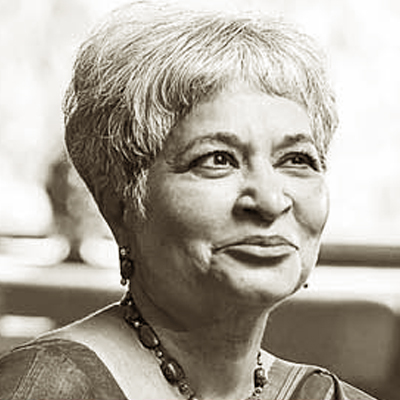
Laila Tyabji (born May 2, 1947) is an Indian social worker, craft revivalist, designer and the founder of Dastkar, a Delhi-based nongovernmental organization, working for the revival of traditional crafts in India. The Government of India in 2012with the fourth–highest Indian civilian award of Padma Shri honored her.
Tyabji co-founded Dastkar with five other women in1981 and the inaugural Dastkar Nature Bazaar was held in New Delhi, the same year at the Triveni Kala Sangam. The nature bazaar has since become a regular event with a permanent venue at Kisan Haat, Mehrauli, Delhi. Tyabji also cooperated with the Self-Employed Women's Association of India (SEWA), a similar on-governmental organization founded by renowned Gandhian, Ela Bhatt. She is credited with revolutionizing the craft industry in India by developing a market for Indian crafts, modernizing the artisans ‘skills, and acting as the liaising link between the artisans and the buyers. Dastkar operates on the policy of leaving the ownership of the goods to the artisans who produced them, retaining a 20 percent revenue towards the operating costs. It provides the artisans with training and assists them with credit, designs, and product development techniques. The organization has a producer group base of over 250, which collectively employs more than 36,000 artisans.
A) Aesthetic significance of performing arts and crafts
B) Aesthetic rootedness, diversity and homogenization
C) Dimensions of Aesthetics (Context based and Extraneous)
D) Aesthetics born out of materials
A) Reimagining learning environment
B) Design pedagogy to address aesthetic rootedness
C) Teaching Aesthetics – New explorations and possibilities
A) Indigenous materials and technology
B) Resilience through vernacular architecture
C) Resilience and regional dynamics
A) Aesthetics of indigenous architecture
B) Aesthetics of urban space
C) Gentrification and urban authenticity
The spirit of the conference is to engage in deep explorations and question rather than ready answers. Even when a solution is being offered seeing the same with a spirit of openness. The reason for organizing the conference is to address the mechanization, standardization and homogenization that is sweeping the world.
The visual experience of modern spaces all over the world is beginning to look alike. In this regard, architecture and artifacts are no exceptions! Until last century we have had diverse cultures with distinct ways of life and fitting aesthetic sensibilities. The homogenization of human cultures is one of the biggest challenges of modernity to be addressed by both academia and practice. The real issue is to understand how knowledge gets created and aesthetic sensibilities as manifested by the things they make and the spaces they employ are inextricably linked to the lived context.
Well being and health of a culture depends on its authenticity and rootedness. The tangible- visible/ experiential- aspects of any culture is its aesthetic sensibility which gets manifested in what and how people do.
The buildings we make, the food we eat also when and how we eat, the language we use etc etc. In fact everything we do constitute our culture, even 'why' and 'how'. When people lose their authentic and original aesthetic sense their culture gets destroyed. So the most important task we need to address is the homogenization of aesthetic sense. All aspects of our life is getting mechanized, standardized and homogenized. This is no longer a cultural question but a deeply spiritual.
The most important thing we can learn from the non literate people/ artisan communities is about the production of knowledge, the role of aesthetic sense in retaining cultural roots as they have been able to keep alive the diversity to a great extent whereas the educated have been totally homogenized. So what is in education that kills our ability to create or recreate knowledge and aesthetic sensibility? What about art, architecture, design and fashion education which is responsible for molding and conditioning the taste of people? What is it in their education that totally distorts and homogenizes their aesthetic sensibility and kills their moral/ ethical sensitivity?
In the present era, education conditions and homogenizes the sensibility of people through the way it imparts lessons in art, architecture, design etc. (to begin with). In the process, we are neglecting vibrant contextual elements and thereby constructing a generic world lacking humane facets of design. So if aesthetic awareness through education is reinvented as awakening the senses through creating situations to connect to the natural context of the learner, authentic diverse cultures can stage a comeback. Through this approach, the organizers sincerely hope that if not in full, at least a part of our lost sensibilities can be regained. Conference is poised to be a form to do this on a continuous basis from time to time
An acknowledgement e-mail with your entry reference number has been sent to the provided email ID. Kindly refer to the same for future correspondence. Thank you!
Close